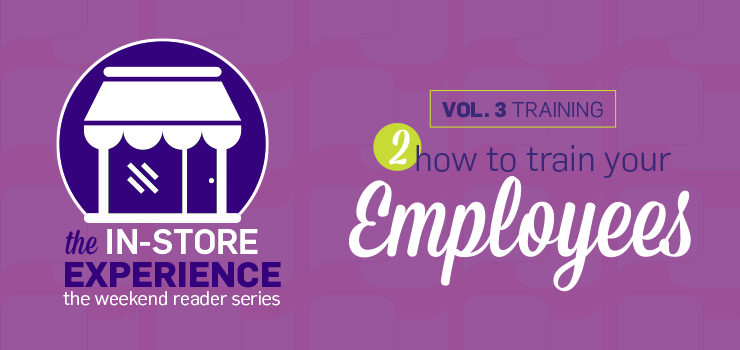In our last blog, Get on the Right Track with Training, we wrote about the importance and impact a smart training regimen will undoubtedly have on you, your colleagues/employees, and your business. If you’re struggling to create a training regimen from scratch or desire tips to improve what you already have, this is the blog you’ve been waiting for. There’s no one size fits all strategy or supporting tactics to achieve your goals, but we urge you to test out the ideas we’re proposing to see what works and what doesn’t.
This may seem like a no-brainer, but in order to sell in the most efficient and effective way you must learn the products you offer inside and out. Luckily, most accessory manufacturers provide a generous amount of resources for you and your colleagues/employees to get up to speed. One popular method is via training modules, which BusinessDictionary.com defines as “Standardized or self-contained segment that with other such segments constitutes an educational course or training program.” Many training modules we’ve encountered tend to incentivize sales people to participate, which is understandably popular. Manufacturers such as PureGear have produced a custom, dedicated module for you to take advantage of while other vendors utilize third party programs from companies such as 3point5. In addition to these more structured educational methods, manufacturers also produce product videos, sales sheets, and presentations you should take advantage of. We actively collect these assets and place them in our main manufacturer landing pages as well individual product detail pages for our customers to use. So feel free to utilize all the resources we offer, including this blog, of course.
Knowing your products inside and out is invaluable, but that’s not the only step you and your colleagues/employees must take in order to complete your training. We recommend you create a sales process you and all your colleagues/employees can follow. BusinessDictionary.com defines the sales process as a “Set of steps aimed at initiating and supporting the identification and evaluation of likely customers (prospects), sales presentation, and successful conclusion of sales activities. It requires a close coordination of people, equipment, tools, and techniques, and includes advertising and promotion.” Key to the sales process is a strong introduction to customers and the relationship constructed from there. Part of building trust and creating these relationships is asking the correct questions (which we talked about in our previous blog). There’s no set list of questions to ask, but they can be dictated by the region you’re in, the season, and the products you’re aiming to push. Practice makes perfect, so be sure to encourage your colleagues/employees to keep at it if they don’t succeed immediately.
The assets and training modules you and your colleagues/employees should be utilizing are invaluable, but there’s nothing quite like learning about a product by using it. Merchandising/demo display units are excellent to not only get a sense of how a product works, but it’s an effective way to bond with a customer and close out a sale. Demo display units usually showcase one spectacular product and can improve the aesthetics of your store. Use them in conjunction with other materials we’ve detailed to learn the product. We offer an excellent selection of merchandising displays, and our offer keeps growing, so be sure to check back periodically or contact your rep. And in case you missed it, we chronicled the importance of merchandising via a trio of blog entries, which can be read here.

